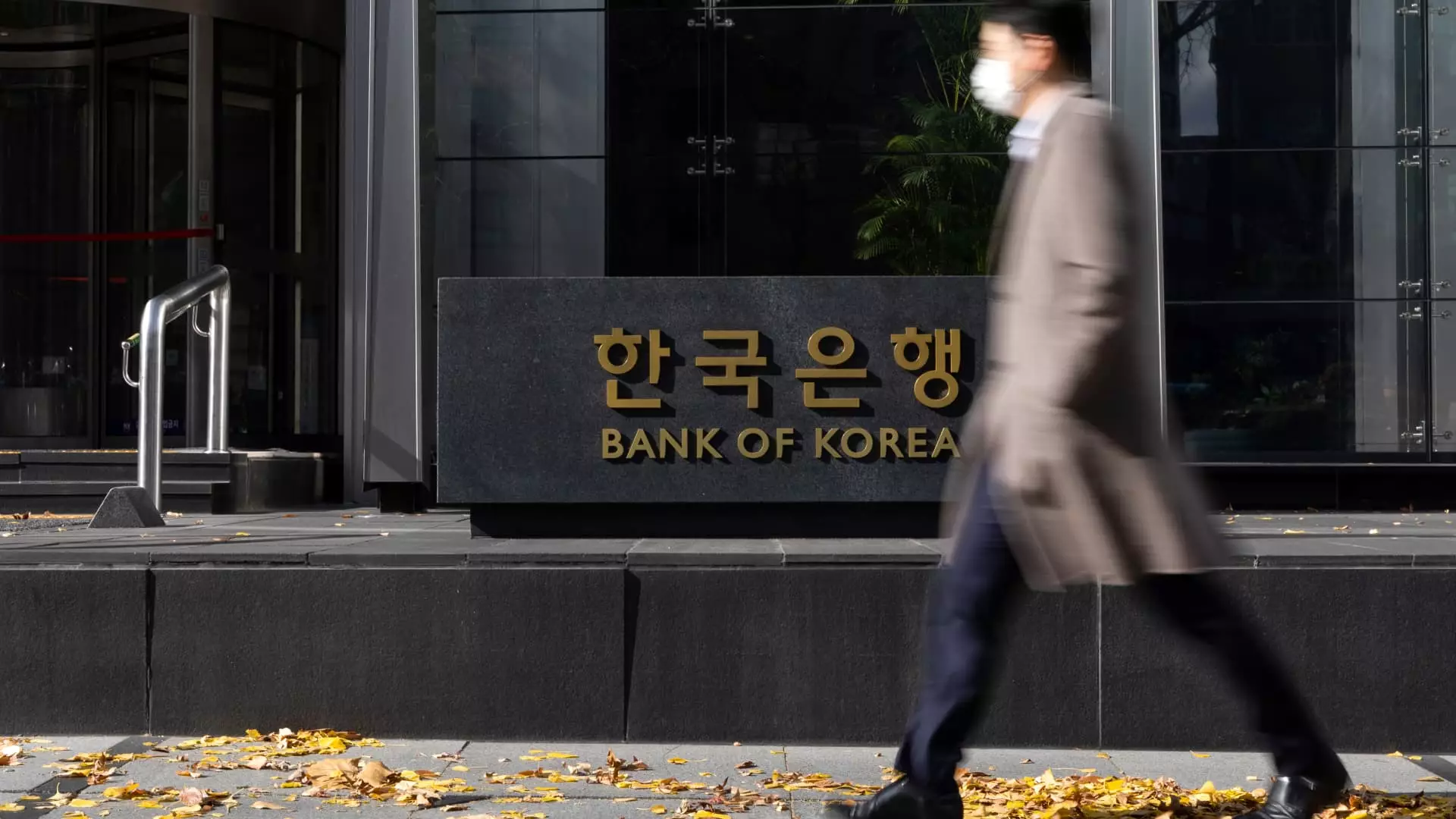In a surprising strategic move, the Bank of Korea (BOK) announced a 25 basis point reduction in its benchmark interest rate on Thursday. This decision marks a significant shift in monetary policy as it is the first instance of consecutive cuts since 2009, following a similar reduction in October. The central bank had been expected to maintain the rate at 3.25%, but recent economic indicators indicated a need for aggressive measures to stimulate growth. This proactive approach reflects the troubling economic landscape characterized by slow growth rates, as evidenced by the lesser-than-anticipated GDP expansion.
Recent reports revealed a concerning trend in South Korea’s economic recovery, with the GDP growing by only 1.5% year-on-year in the third quarter, falling short of the 2% forecasted by economists. This disappointing figure prompted the BOK to revise its growth projections, lowering the GDP outlook for 2024 from 2.4% to 2.2%. Furthermore, projections for 2025 were adjusted downwards from 2.1% to 1.9%. These revisions are alarming, showcasing the persistent headwinds facing the South Korean economy and the necessity for the central bank to act decisively.
Amid this struggle, South Korea has experienced a notable decline in inflation rates, which recently dipped to 1.3% in October—the lowest since February 2021. This stabilization hints at a gradual easing of inflationary pressures; however, the BOK remains cautious. The central bank acknowledged the intensified downward risks to the economy, justifying its decision to lower rates further to protect against potential negative outcomes.
Inflation trends provide a mixed perspective for policymakers; while lower inflation could stimulate consumption, the overall economic weakness raises concerns about consumer confidence and business investments.
Compounding these economic challenges is the depreciation of the South Korean won, which has seen a concerning drop against the U.S. dollar. The currency’s value recently fell to a two-year low, prompting fears about the implications of currency weakness on import prices and overall economic stability. Prior to the rate cut, economists had anticipated the BOK would hold rates steady due to this depreciation, illustrating the tough balancing act the central bank is faced with in navigating economic recovery.
Governor Rhee Chang-yong highlighted the need to monitor the currency’s exchange rate closely, indicating that the swift decline of the won could influence future monetary policy decisions. This sentiment underscores the interconnectedness of currency stability and interest rate strategies.
The BOK’s decision to lower interest rates reflects a proactive response to slow economic growth, dismal GDP forecasts, and the delicate balance of inflationary pressures. While the cuts aim to encourage spending and investment, challenges such as currency depreciation loom larger. The future remains uncertain, but the BOK’s commitment to support the economy through unconventional measures signifies an understanding of the need for immediate action. The efficacy of these strategies will depend on their ability to rekindle growth while managing the complexities of a fluctuating currency and shifting economic dynamics.

Leave a Reply